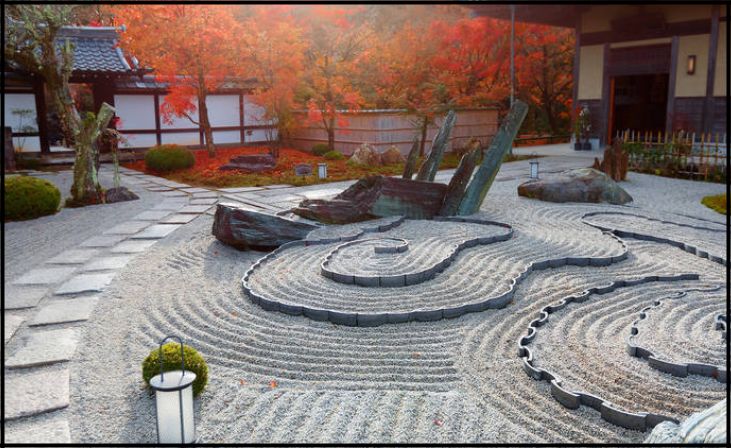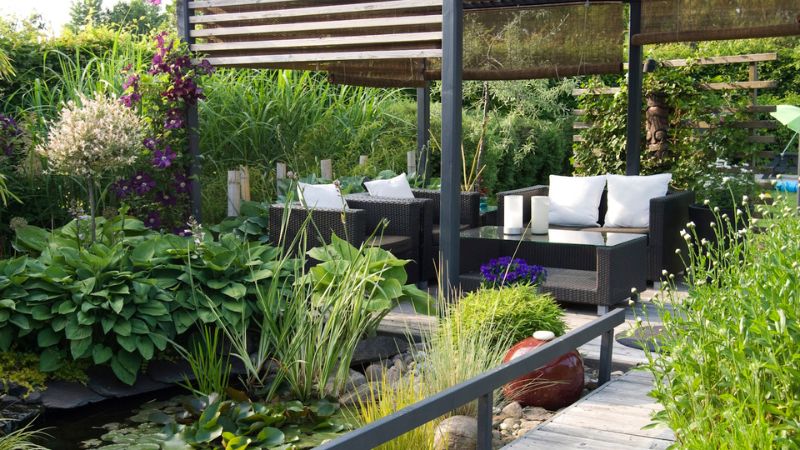A beautiful garden can transform your backyard into a picturesque retreat, offering a space for relaxation and enjoyment. In this article, we explore seven exquisite garden concepts that will elevate your outdoor space to new heights of beauty and tranquility.
English Cottage Garden

What is an English Cottage Garden?
An English Cottage Garden is a charming and romantic style of garden that reflects the quaint beauty of rural English countryside homes.
Characteristics of an English Cottage Garden
- Abundant flowers in a variety of colors
- Informal layout with winding paths and hidden nooks
- Mix of perennial and annual plants
- Climbing roses and flowering shrubs
- Rustic elements like wooden fences and stone pathways
How to Create an English Cottage Garden
To create your own English Cottage Garden, start by selecting a variety of cottage-style plants such as peonies, lavender, delphiniums, and hollyhocks. Plant them in informal groupings and allow them to grow naturally, avoiding overly structured designs. Incorporate rustic elements like weathered wooden benches, bird baths, and vintage garden tools to enhance the charming ambiance.
Japanese Zen Garden

What is a Japanese Zen Garden?
A Japanese Zen Garden, also known as a “karesansui” garden, is a minimalist and tranquil garden inspired by Zen Buddhism.
Characteristics of a Japanese Zen Garden
- Minimalist design with carefully placed rocks and gravel
- Pruned trees and shrubs to create a sense of harmony
- Raked gravel or sand to represent flowing water or ripples
- Limited plantings with an emphasis on foliage texture and color
- Peaceful atmosphere conducive to meditation and contemplation
How to Design a Japanese Zen Garden
Designing a Japanese Zen Garden involves careful planning and attention to detail. Start by selecting a focal point such as a rock arrangement or a small pond. Use gravel or sand to create patterns that represent natural elements like water or mountains. Add minimal plantings such as bamboo, Japanese maple, and moss to enhance the serene atmosphere. Incorporate elements of symmetry and balance to create a harmonious composition.
Mediterranean Courtyard

What is a Mediterranean Courtyard?
A Mediterranean Courtyard is a lush and inviting outdoor space inspired by the sunny climates of the Mediterranean region.
Characteristics of a Mediterranean Courtyard
- Terracotta pots filled with aromatic herbs like rosemary and thyme
- Citrus trees such as lemon and orange
- Colorful tiles and mosaics inspired by Mediterranean architecture
- Wrought iron furniture with comfortable cushions
- Fountain or water feature as a focal point
How to Transform Your Backyard into a Mediterranean Oasis
Transforming your backyard into a Mediterranean Courtyard involves incorporating elements of Mediterranean style and culture. Start by adding terracotta pots filled with fragrant herbs and citrus trees for a taste of the Mediterranean countryside. Use colorful tiles and mosaics to create a vibrant atmosphere reminiscent of Mediterranean architecture. Add a fountain or water feature to create a focal point and enhance the soothing ambiance of your courtyard.
Modern Minimalist Garden
What is a Modern Minimalist Garden?
A Modern Minimalist Garden is characterized by clean lines, geometric shapes, and a limited color palette, creating a sleek and contemporary outdoor space.
Characteristics of a Modern Minimalist Garden
- Simple and streamlined design with clean lines and geometric shapes
- Limited color palette with a focus on neutral tones like white, gray, and black
- Architectural elements such as concrete planters and steel sculptures
- Low-maintenance plantings with an emphasis on foliage texture and form
- Integration of technology such as automated irrigation systems and LED lighting
Tips for Creating a Modern Minimalist Garden
Creating a Modern Minimalist Garden requires careful planning and attention to detail. Start by designing a layout with clean lines and geometric shapes to create a sense of order and simplicity. Choose plants with architectural interest such as succulents, ornamental grasses, and bamboo to complement the modern aesthetic. Incorporate minimalist hardscape materials like concrete, steel, and wood to enhance the contemporary vibe of your garden.
Wildflower Meadow
What is a Wildflower Meadow?
A Wildflower Meadow is a natural and ecologically diverse garden filled with native wildflowers and grasses, creating a vibrant and ever-changing landscape.
Characteristics of a Wildflower Meadow
- Native wildflowers and grasses adapted to local climate and soil conditions
- Diverse mix of plant species to attract pollinators and support local wildlife
- Low-maintenance and sustainable gardening practices
- Seasonal variations in bloom colors and textures
- Dynamic and evolving landscape with naturalistic plantings
How to Plant and Maintain a Wildflower Meadow
Planting and maintaining a Wildflower Meadow requires careful consideration of site conditions and plant selection. Start by preparing the soil and removing weeds to create a suitable growing environment for wildflowers and grasses. Choose a mix of native plant species adapted to your region’s climate and soil conditions. Plant seeds or plug plants in the fall or early spring and allow them to establish and grow naturally. Maintain your meadow by mowing once or twice a year to control weeds and promote new growth, avoiding fertilizers and pesticides to support a healthy ecosystem.
Tropical Paradise
What is a Tropical Paradise Garden?
A Tropical Paradise Garden brings a touch of the tropics to your backyard with lush foliage plants, bold flowers, and exotic palms, creating a vibrant and exotic outdoor oasis.
Characteristics of a Tropical Paradise Garden
- Lush foliage plants with large, colorful leaves
- Bold flowers in vibrant hues of red, orange, pink, and yellow
- Exotic palms and tropical trees such as banana and coconut
- Water features such as ponds, streams, or waterfalls
- Outdoor seating areas with comfortable cushions and shade
Creating Your Own Tropical Paradise
Creating your own Tropical Paradise Garden involves selecting tropical plants and creating a lush and inviting outdoor space. Start by choosing plants with large, colorful leaves like elephant ears, cannas, and bird of paradise to create a lush tropical backdrop. Add bold flowers in vibrant hues to add pops of color and attract pollinators. Incorporate exotic palms and tropical trees to provide shade and height to your garden. Enhance the tropical ambiance with water features such as ponds or waterfalls, and create outdoor seating areas with comfortable cushions and shade for relaxation and enjoyment.
Sustainable Garden
What is a Sustainable Garden?
A Sustainable Garden incorporates eco-friendly practices such as rainwater harvesting, composting, and using native plants to create a garden that is both beautiful and environmentally friendly.
Characteristics of a Sustainable Garden
- Rainwater harvesting systems to collect and store rainwater for irrigation
- Composting bins to recycle organic waste into nutrient-rich compost
- Use of native plants adapted to local climate and soil conditions
- Reduction of chemical inputs such as fertilizers and pesticides
- Creation of habitat for local wildlife such as birds, bees, and butterflies
Implementing Sustainable Practices in Your Garden
Implementing sustainable practices in your garden starts with reducing your environmental footprint and creating a more resilient and biodiverse ecosystem. Install rainwater harvesting systems to collect and store rainwater for irrigation, reducing your dependence on municipal water sources. Start composting organic waste such as kitchen scraps and yard trimmings to create nutrient-rich compost for your garden. Choose native plants adapted to your region’s climate and soil conditions, reducing the need for water, fertilizers, and pesticides. Create habitat for local wildlife by incorporating native plants, bird feeders, and nesting boxes into your garden design, supporting a healthy and diverse ecosystem.






